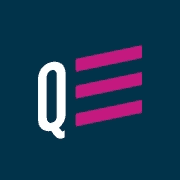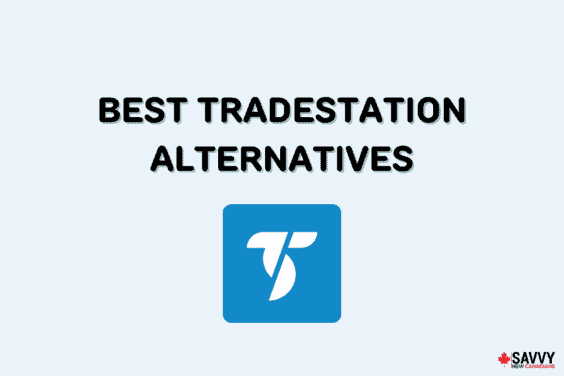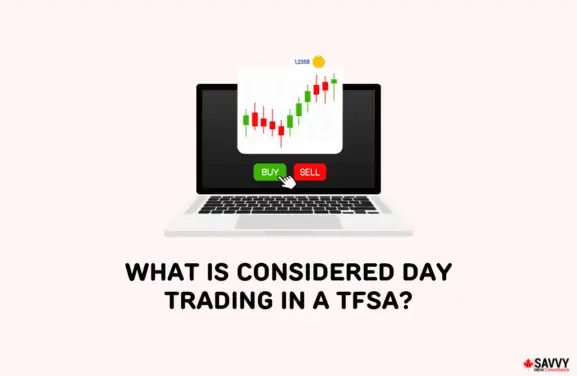Covered calls are a fairly advanced options strategy traders use to earn premiums from selling call option contracts.
A call option is a derivative contract that gives the option the right, but not the obligation, to purchase a stock at a certain price by a specific date.
The covered call strategy requires you to own at least 100 shares of a stock. You can then sell call options for the underlying stock to collect a premium from the contracts. Selling a call option means you are hoping that the underlying stock’s price remains below the option’s strike price.
They are called covered calls because if the price rises above the strike price, the call option buyer can exercise the contract. You would then have to sell that buyer your 100 shares at the option’s strike price.
Covered calls have proven to be an excellent way to produce additional income for your portfolio, especially if the strike price for the option is at the money.
Top Canadian Covered Call ETFs
This article covers ten Canadian covered call ETFs you can consider for your portfolio.
- BMO Covered Call Canadian Banks ETF (ZWB.TO)
- CI Energy Giants Covered Call ETF (NXF.TO)
- BMO Canadian High Dividend Covered Call ETF (ZWC.TO)
- Purpose Healthcare Innovation Yield Fund ETF (HEAL.TO)
- Horizons Equal Weight Canadian Bank Covered Call ETF (HEF.TO)
- CI HealthCare Giants Covered Call ETF (FHI.TO)
- BMO US High Dividend Covered Call ETF (ZWH.TO)
- Purpose Investments Tesla Yield Shares ETF (YTSL.TO)
- Horizons Canadian Large Cap Equity Covered Call ETF (HEX.TO)
- Horizons NASDAQ-100 Covered Call ETF (HEJ.TO)
BMO Covered Call Canadian Banks ETF (ZWB)
Here are some key facts for ZWB:
- Net Assets: $2.88 billion
- Distribution Yield: 7.70%
- Distribution Frequency: Monthly
- 52-week Price Range: $17.10 – $20.03
- 5-Year Annual Average Return: 4.30%
- MER: 0.71%
ZWB Is a BMO covered call ETF that sells covered calls against long positions in the major Canadian banks.
As its name suggests, ZWB holds stock positions in the major Canadian banks, including BMO, RBC, National Bank, Toronto Dominion, CIBC, and the Bank of Nova Scotia. It also holds a 23% BMO Equal Weight Banks Index ETF (ZEB) allocation.
With a 7.70% monthly distribution yield, shareholders of ZWB received a monthly distribution of $0.11 per share in June 2023.
CI Energy Giants Covered Call ETF (NXF.TO)
Here are some key facts for NXF.TO:
- Net Assets: $301 million
- Distribution Yield: 12.95%
- Distribution Frequency: Quarterly
- 52-week Price Range: $5.14 – $6.78
- 5-Year Annual Average Return: 0.7%
- MER: 0.71%
NXF.TO is a covered call ETF from CI that sells covered calls on Canadian global energy stocks.
This ETF holds 15 of the largest energy companies in the world at equal weights of 6-7% allocations.
It holds a diverse portfolio of stocks that are 46% from the US, 40% from the international market, and about 14% from Canadian companies.
With a current annualized distribution yield of 12.95%, shareholders received a quarterly distribution of about $0.14 per share in June 2023.
BMO Canadian High Dividend Covered Call ETF (ZWC)
Here are some key facts for ZWC:
- Net Assets: $1.6 billion
- Distribution Yield: 8.00%
- Distribution Frequency: Monthly
- 52-week Price Range: $16.15 – $18.59
- 5-Year Annual Average Return: 4.17%
- MER: 0.72%
ZWC.TO is another covered call ETF from BMO that focuses on selling covered calls for 103 of the top dividend-paying stocks on the TSX.
The top holdings by weight in ZWC are Toronto-Dominon Bank (5.12%), Canadian National Railway (5.02%), Royal Bank of Canada (5.00%), Enbridge Inc (5.00%), and the Bank of Nova Scotia (4.92%).
With an annualized distribution yield of 8.00%, shareholders of ZWC received a $0.11 distribution in June 2023.
Purpose Healthcare Innovation Yield Fund ETF (HEAL)
Here are some key facts for HEAL.TO:
- Net Assets: $5.4 million
- Distribution Yield: 8.21%
- Distribution Frequency: Monthly
- 52-week Price Range: $18.59 – $21.00
- 5-Year Annual Average Return: N/A
- MER: 1.11%
This Purpose Investments healthcare covered call ETF is a very new entry to the TSX as it was established in 2022.
HEAL.TO holds 55 underlying stocks, all American healthcare companies like Johnson & Johnson, UnitedHealth Group Inc., and Pfizer Inc.
The fund pays out a monthly distribution with a strong yield of 8.21% based on the covered call options written against the holdings.
As with many covered call ETFs, HEAL.TO has a high MER of 1.11%. This means for every $10,000 you have invested in HEAL; you will pay $111.00 in annual fees.
Horizons Equal Weight Canadian Bank Covered Call ETF (BKCC)
Here are some key facts for BKCC.TO:
- Net Assets: $15.7 million
- Distribution Yield: 8.35%
- Distribution Frequency: Monthly
- 52-week Price Range: $14.18 – $16.58
- 5-Year Annual Average Return: 2.18%
- MER: 0.85%
BKCC.TO is a Horizons covered call ETF that sells covered calls for big Canadian bank stocks.
The fund holds roughly equal weight to the six largest Canadian banks, which are Royal Bank, Toronto Dominion, National Bank, Bank of Montreal, CIBC, and the Bank of Nova Scotia. It also holds a 39.87% allocation to the Horizons Equal Weight Canada Banks Index ETF (HEWB.TO).
With an annualized distribution yield of 8.35%, shareholders received a monthly distribution of about $0.10 per share in June 2023.
CI HealthCare Giants Covered Call ETF (FHI)
Here are some key facts for FHI:
- Net Assets: $87.34 million
- Distribution Yield: 5.61%
- Distribution Frequency: Quarterly
- 52-week Price Range: $10.83 – $12.53
- 5-Year Annual Average Return: N/A
- MER: 0.71%
FHI covers healthcare stocks from all over the world, although it has a 94% allocation to US equities.
Some of the largest weighted holdings in FHI include Eli Lilly and Co (6.40%), Merck and Co Inc (5.33%), Medtronic PLC (5.31%), and Abbott Laboratories (5.29%).
With a generous annualized distribution yield of about 5.73%, shareholders receive a quarterly distribution for holding this ETF.
BMO US High Dividend Covered Call ETF (ZWH)
Here are some key facts for ZWH:
- Net Assets: $1.01 billion
- Distribution Yield: 5.70%
- Distribution Frequency: Monthly
- 52-week Price Range: $19.75 – $23.05
- 5-Year Annual Average Return: 7.31%
- MER: 0.72%
ZWH is yet another BMO covered call ETF that tracks high-dividend paying US stocks.
This ETF holds some of the best dividend-paying stocks that trade on the US stock market. The highest weight allocations belong to Apple Inc. (4.32%), Home Depot Inc. (4.25%), JPMorgan Chase & Co. (4.20%), and Microsoft Corp (4.12%).
With an annualized distribution yield of 5.70%, shareholders received a monthly distribution payment of about $0.10 per share in June 2023.
Here are some key facts for YTSL.NE:
- Net Assets: $42.7 million
- Distribution Yield: N/A
- Distribution Frequency: Monthly
- 52-week Price Range: $16.91 – $30.11
- 5-Year Annual Average Return: N/A
- MER: 0.58%
Canadian investors looking to gain exposure to Tesla (TSLA) stock without paying for shares in US dollars might want to consider YTSL.NE.
This ETF sells covered calls exclusively against Tesla shares. Options traders know that Tesla has some of the most volatile premiums on the market, so the dividend can fluctuate quite a bit.
For those who are okay with dealing with the volatility, YTSL has paid out a distribution of $0.30 per share every month so far in 2023.
Horizons Canadian Large Cap Equity Covered Call ETF (CNCC)
Here are some key facts for CNCC.TO:
- Net Assets: $35.3 million
- Distribution Yield: 9.87%
- Distribution Frequency: Monthly
- 52-week Price Range: $11.76 – $13.14
- 5-Year Annual Average Return: 4.10%
- MER: 0.84%
CNCC.TO is another covered call ETF offering from Horizons. This ETF tracks the largest company in Canada by holding a 98.82% allocation to the S&P/TSX 60 index ETF (HXT.TO).
This ETF allows Canadian investors to go long on the largest companies on the TSX while also earning monthly distribution payments.
With an annualized yield of 9.87%, shareholders received a monthly payment of $0.10 per share in June 2023.
Horizons NASDAQ-100 Covered Call ETF (QQCC)
Here are some key facts for QQCC.TO:
- Net Assets: $136 million
- Distribution Yield: 11.87%
- Distribution Frequency: Monthly
- 52-week Price Range: $8.99 – $11.20
- 5-Year Annual Average Return: 4.67%
- MER: 0.90%
QQCC.TO is a Horizons covered call ETF that sells covered calls for the NASDAQ-100 Index ETF (HXQ.TO), which holds the largest American tech companies.
The performance of QQCC.TO will depend largely on the performance of the NASDAQ-100 index. In the first half of 2023, the fund returned 25.27% to investors. But this fund has had an average annual return of just 2.77% since inception.
With an annualized distribution yield of 11.87%, QQCC.TO paid a monthly distribution of about $0.10 per share in June 2023.
Covered Call ETFs Explained
So, how can you apply covered calls to ETFs? Essentially, the ETF company will do all of the hard work for you.
All you need to do is buy shares of the covered call ETF, and you will reap the benefits of premiums paid out as quarterly or monthly distributions.
As mentioned above, the covered call options sold will yield a premium that the buyer pays. The ETF passes these premiums onto the shareholders of the fund. The ETF provider profits from the transaction and expense ratio fees.
Not every Canadian ETF provider will offer a covered call ETF option. BMO Global Asset Management and CI Global Asset Management offer several options for Canadian investors.
How to Buy Covered Call ETFs in Canada
The best part about buying covered call ETFs is that you don’t need to have options trading access for your account. Most brokerages in Canada require additional applications to trade options.
You can buy these ETFs using these discount brokerages:
Wealthsimple Trade
Wealthsimple is a no-trading-fee discount brokerage for Canadian investors who want to trade stocks, ETFs, and cryptocurrency.
Through the Wealthsimple Trade site, you can buy and sell ETFs for free with zero-commission trading fees.
Wealthsimple Trade

Trade stocks, ETFs, and options
Excellent trading platform for beginners
Deposit $150+ to get a $25 cash bonus
Transfer fees waived up to $150
Questrade
A favourite platform amongst Canadian investors, Questrade is the best discount brokerage in Canada.
Questrade allows investors to buy ETFs for free with just a minimal $4.95 charge to sell an ETF position.
Questrade

Trade stocks, ETFs, options, FX, bonds, CFDs, mutual funds, etc.
Get $50 trade credit with $1,000 funding
Low and competitive trading fees
No quarterly inactivity fees
Access to advanced tools and trading data
Top platform for advanced traders
Transfer fees waived
Qtrade
Qtrade, a Vancouver-based discount brokerage, provides lower trading fees and a host of investment options for Canadian investors.
Looking to trade ETFs? Check out Qtrade’s list of free ETFs that you can buy and sell for no commission fees.
Qtrade

Up to $150 sign-up bonus
Trade stocks, ETFs, options, bonds, etc.
Excellent platform for newbies and seasoned investors
Competitive trading fees
Excellent customer service
Are Covered Call ETFs a Good Investment?
It all depends on your investing goals, but generally, covered call ETFs can be a great source of cash flow to your account.
As you can tell from the price ranges of these ETFs, there is very little volatility in what is seen as a sound options trading strategy.
High distribution yields will be attractive for investors looking for income from their investments.
That said, you should decide on your own if covered call ETFs are right for your portfolio. This article is not meant to be financial advice but to introduce the world of covered call ETFs.
Pros and Cons of Covered Call ETFs
With little price volatility and high distribution yields, covered call ETFs are a great way to diversify your portfolio of assets.
Keep in mind if you are looking for high capital growth, these ETFs won’t increase in price. The monthly or quarterly distributions are meant to offset a lack of price growth. In this way, they act like fixed-income assets.
Over time, these distributions can compound, or you can re-allocate them to other assets like growth stocks.
It’s an excellent way to invest in options trading without actually trading options contracts.
Are Covered Call ETFs Safe?
Yes, covered call ETFs are safe, especially in a volatile market environment. Since these funds trade in a tight range, the regular income distributions can really help improve your cash position.
If you’re worried about stocks being volatile, then covered call ETFs are an excellent way to hedge against market instability.
FAQs
It depends on which account you hold them in. If you are investing in your TFSA, then distributions and capital gains are not taxed.
If it is a non-registered investment account, then your distributions will be taxed as income.
No Vanguard does not offer a covered call ETF for Canadian investors. On the TSX, the primary companies that offer covered call ETFs are BMO, Horizons, and CI.
Related:







I have a small amount of money in a LIRA, around 45k, currently all in VGRO. I recently created a RRIF as I am turning 60 and I retired about a year ago. Since I am currently living off my savings with low expenses and trying not to withdraw from any accounts due to the downturn, I was looking at ZWU. Would it make sense to flip VGRO to ZWU and withdraw the distribution to savings each month as additional spending money? I also have around 850k in RRSP, TFSA, and an investment account that I am waiting to let bounce back.
Thanks!